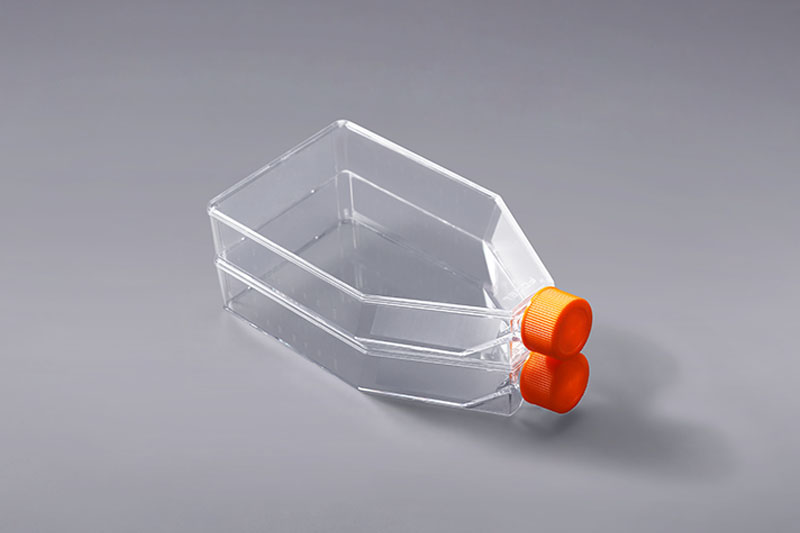Cell culture is a commonly used scientific research method in the field of life sciences. The cell culture flasks are a consumable suitable for medium-scale cell tissue culture in the laboratory. Cell culture needs to be carried out in a sterile environment. How can we avoid all kinds of pollution during cell culture?
First of all, the pollution sources of cell culture mainly come from three aspects. On the one hand, chemical pollution refers to some chemical substances that are toxic or irritating to cells. These pollutions generally come from unwashed utensils and impure chemical reagents. And distilled water of poor quality. Among them, bacterial endotoxin has a greater impact on cell growth and experimental results. It is the main source of clinical heat. The production of vaccines and cytokines produced by cell culture in clinical medicines should be avoided in the production process of drugs. Pollution of toxins. To reduce chemical pollution, high-quality distilled water should be used, and disposable cell culture vessels should be used as much as possible.
On the other hand, there is biological contamination, including contamination by bacteria, molds and yeasts that are relatively easy to find, and contamination by viruses, mycoplasma and other cells that are relatively difficult to find. Among them, virus contamination particles are extremely small, generally lurking in cells, and are not lethal to the entire cell culture, which may allow researchers to obtain cell test results affected by the virus. Generally, biological pollution occurs during the operation of cell culture, so good cell culture operating environment and operating habits are the key to reducing biological pollution.
On the other hand, the pollution is mainly related to improper operation. For example, many experimenters do not wash their hands and enter the laboratory only by spraying alcohol; do not hold the bottleneck part when holding the cell culture square flask and the culture solution; there are too many things in the ultra-clean bench Wait. Pay attention to the above aspects in cell culture experiments to avoid affecting the results of cell experiments.
The FAI climbed 5.9 percent year-on-year in the first 11 months of 2018, quickening from the 5.7-percent growth in Jan-Oct, the National Bureau of Statistics (NBS) said Friday in an online statement.
The key indicator of investment, dubbed a major growth driver, hit the bottom in August and has since started to rebound steadily.
In the face of emerging economic challenges home and abroad, China has stepped up efforts to stabilize investment, in particular rolling out measures to motivate private investors and channel funds into infrastructure.
Friday's data showed private investment, accounting for more than 60 percent of the total FAI, expanded by a brisk 8.7 percent.
NBS spokesperson Mao Shengyong said funds into weak economic links registered rapid increases as investment in environmental protection and agriculture jumped 42 percent and 12.5 percent respectively, much faster than the average.
In breakdown, investment in high-tech and equipment manufacturing remained vigorous with 16.1-percent and 11.6-percent increases respectively in the first 11 months. Infrastructure investment gained 3.7 percent, staying flat. Investment in property development rose 9.7 percent, also unchanged.
 English
English



















































